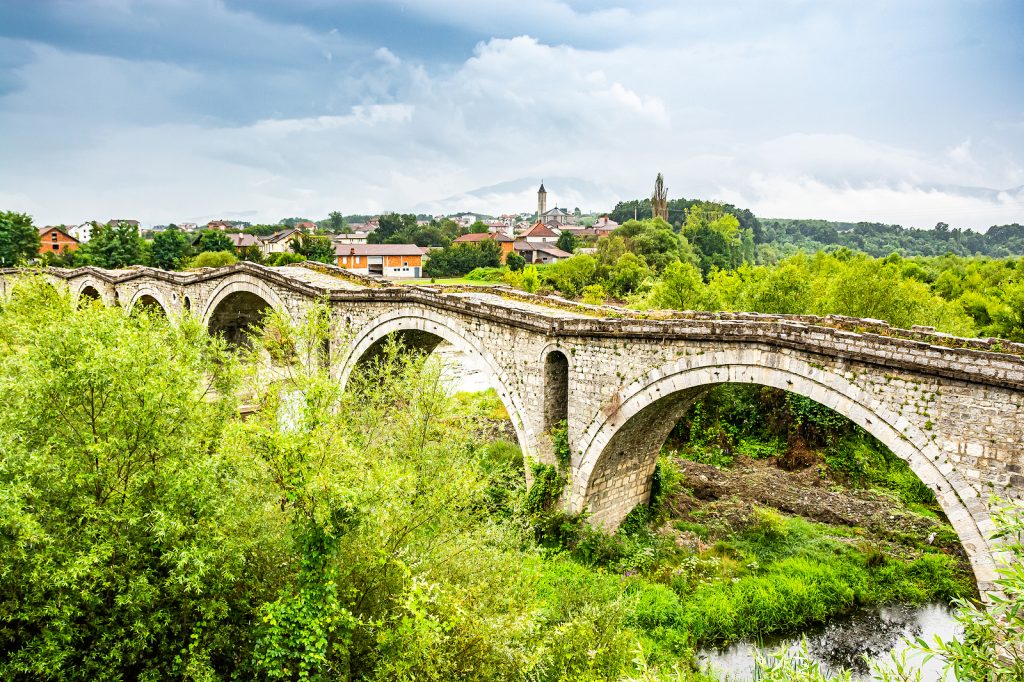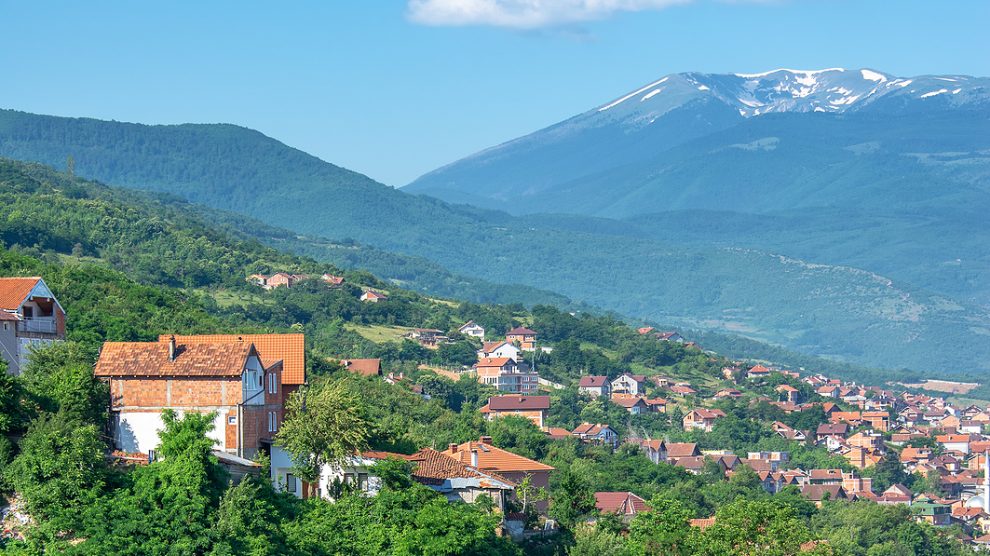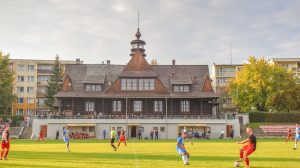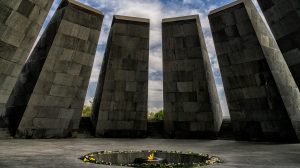Kosovo is the third least-visited country in Europe, ahead of only Moldova and Liechtenstein. Some backpackers trek through its Accursed Alps as part of the Peaks of the Balkans trail, but few international tourists explore its cities.
The Visoki Dečani Monastery was surrounded by blossoming trees, then walls, then armoured vehicles, then barricades and a military checkpoint.
Italian soldiers stationed as part of NATO’s Kosovo Force (KFOR)—joined by, I must say, perhaps the cutest stray puppies I have ever seen—checked my passport and then allowed me to enter one of the most endangered UNESCO World Heritage Sites.
- The botanical beauty of Slovenia’s Lake Bohinj
- Greek villages and hidden submarines: Postcards from the Albanian Riviera
- Why the words rude and vile explain Romania
KFOR has been guarding the monastery since the 1999 Kosovo War, and one of the Serbian Orthodox priests there told me he was very grateful for their presence. In 2004, local Kosovan Albanians threw Molotov cocktails at the monastery, and several were shot by KFOR in the ensuing clash. In 2007, others threw hand grenades at it.
Since then, ethnic tensions in southern Kosovo have largely stabilised, and the monastery has re-opened to visitors.
Completed in 1335, the monastery’s stone church is filled with beautiful paintings depicting scenes from the Old and New Testament. The compound sits in a valley in the snow-capped Accursed Alps close to the borders with Albania and Montenegro, providing breathtaking scenery to supplement an already breathtaking work of art.

The Visoki Dečani Monastery church
After walking back into the town of Deçan, I waited for the bus at the base of a flagpole bearing the flag of the Kosovo Liberation Army (KLA). A memorial stood nearby, and stray dogs napped on the roundabout watching passing Yugos and tractors.
Peja—Kosovo’s fourth-largest city and my next stop—was just a 20-minute ride. While I had found Deçan’s views pretty, Peja’s were even more stunning. The city lies on a river which flows down from the Accursed Alps through the Rugova Canyon. In late April, the sun made the trees’ yellow-green new leaves and buds glow and contrast with the bright white of the mountains’ snow and blue of the sky.
In the mouth of the Rugova Canyon sits the sprawling compound of the Patriarchal Monastery of Peć. Built in the 13th century and expanded in the 14th century, the monastery became the seat of Serbian Patriarchs in 1346. It is part of the same UNESCO World Heritage Site as the Visoki Dečani Monastery but is guarded by local police rather than KFOR.
The Patriarchate of Peć compound contains a tower, well, ruins, and a striking church painted red on the outside—its interior is adorned with biblical paintings. Nuns tended the garden in which magnolias and tulips bloomed. Besides the nuns, I was alone.
That seemed odd. The churches I was seeing—and the craggy peaks above me—were as lovely as any others I had seen in Europe. And it had been arguably my least expensive trip on the continent—the delicious salmon tagliatelle I ordered at a swanky restaurant in downtown Peja was less than five euros.
So where was everyone?
Kosovo is the third least-visited country in Europe, ahead of only Moldova and Liechtenstein. Some backpackers trek through its Accursed Alps as part of the Peaks of the Balkans trail, but few international tourists explore its cities.

The Ottoman-era Terzijski Bridge in Bishtazhin, close to Gjakova
Before seeing the monastery in Deçan, I had stayed in Gjakova, where painstaking effort has gone into restoring the beautiful historical bazaar—the oldest in Kosovo—that was bombed and largely destroyed in 1999. As in Peja, older buildings have stylish new interiors with classy bars, lounges, cafes, and restaurants. My host in Gjakova told me he lived a luxury lifestyle for less than it costs many Europeans to live non-luxury ones.
Southern Kosovo is still marked by the contradictions of its history: the designer bars inside a reconstructed Ottoman bazaar, the American flags hanging around a memorial to fighters of the once Marxist-Leninist KLA, the Serbian Orthodox priest who was thankful for NATO.
But its beauty and appeal are coherent—kind people, good food, jaw-dropping mountains, ancient churches.
Unlike many news and information platforms, Emerging Europe is free to read, and always will be. There is no paywall here. We are independent, not affiliated with nor representing any political party or business organisation. We want the very best for emerging Europe, nothing more, nothing less. Your support will help us continue to spread the word about this amazing region.
You can contribute here. Thank you.







Add Comment